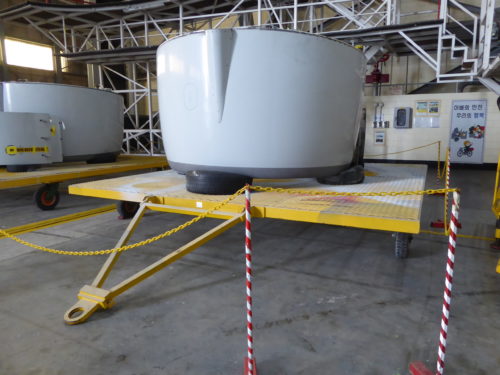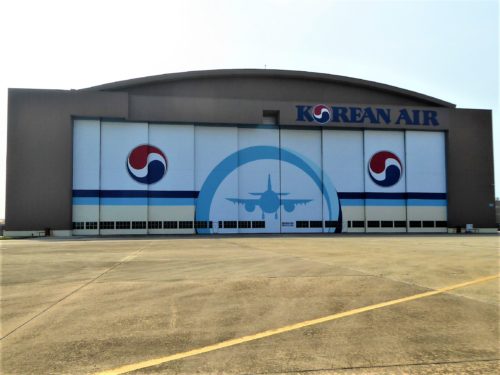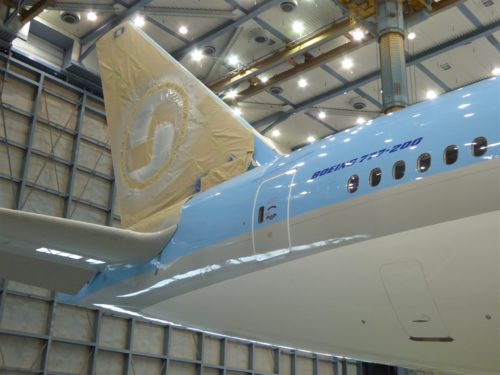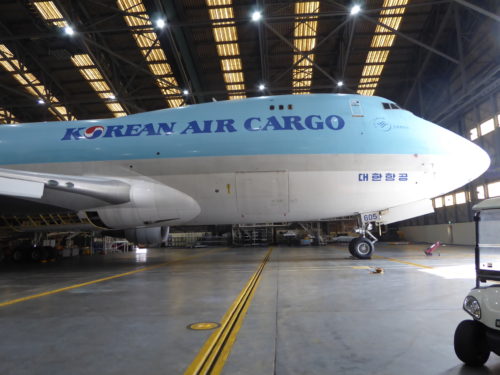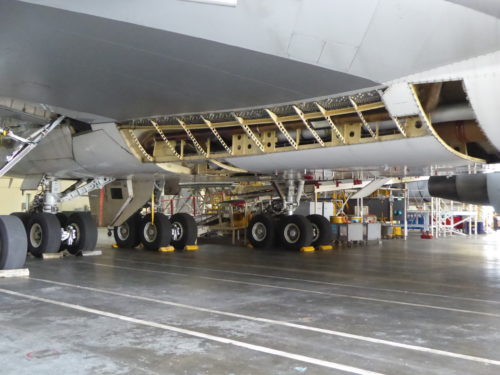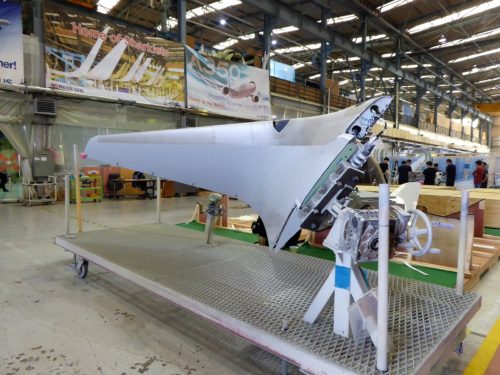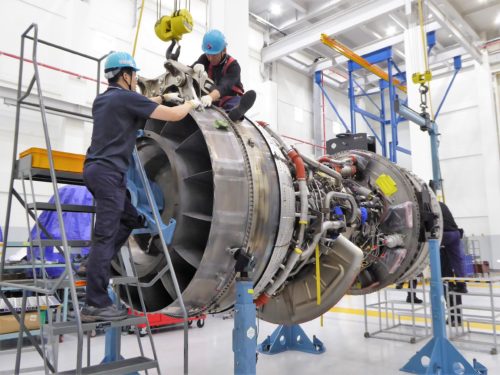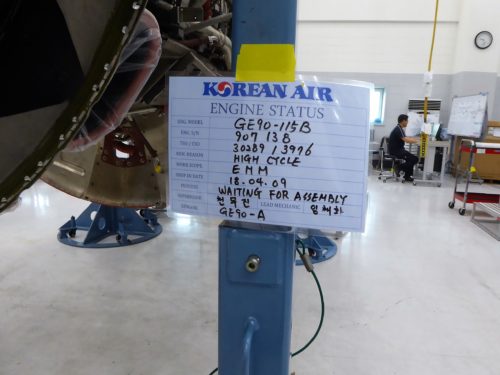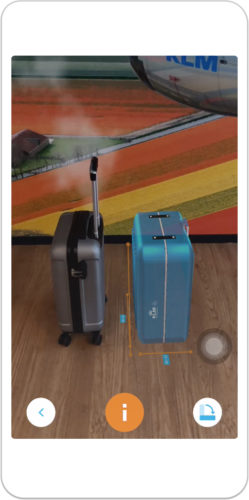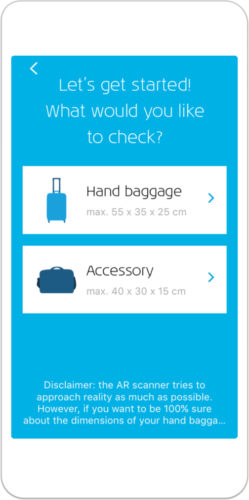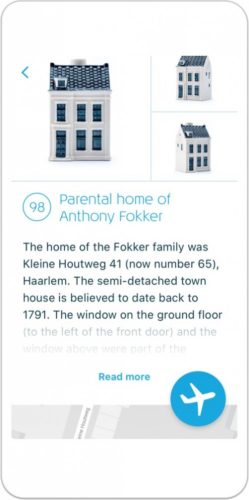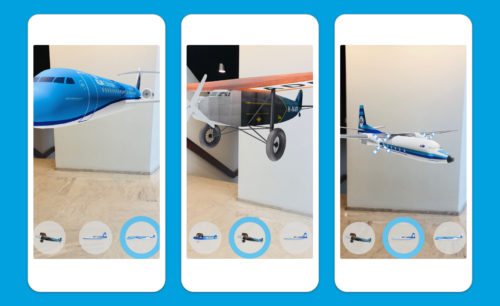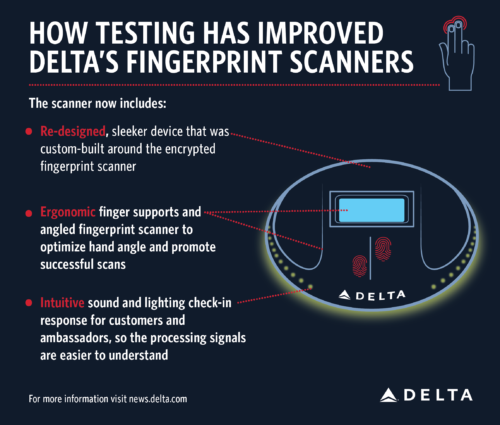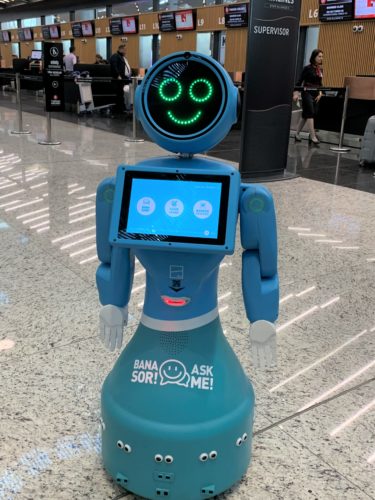
We adore the rolling little “Ask me!” robots some airports have hired to answer questions and help passengers find their way around.
But they seem more entertainment than essential.
But thanks to the pandemic, robots are getting a promotion at many airports – as super cleaners.
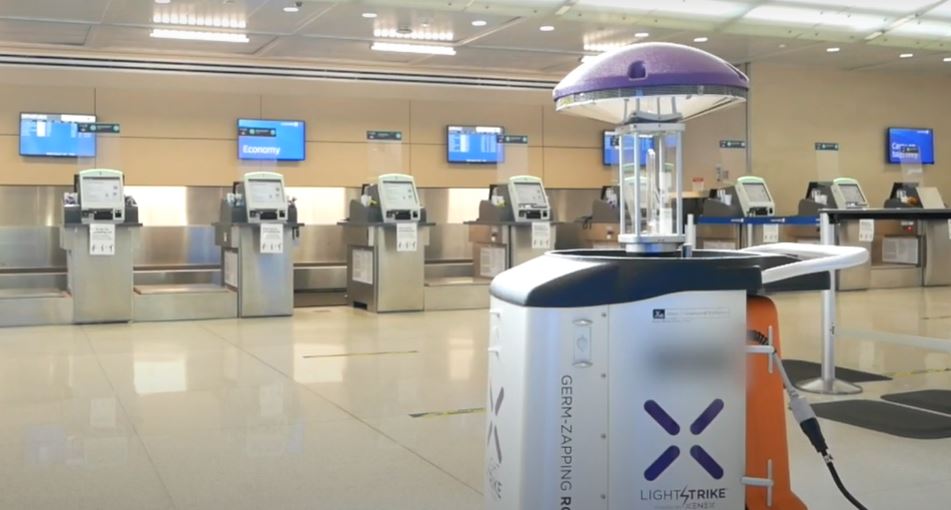
Robots clean up before we fly
Airports and airlines are scrambling to get the latest technology in place to keep terminal spaces and airline cabins disinfected and sanitized.
And robots are doing their part.
In May, Pittsburgh International Airport (PIT) and Pittsburgh-based Carnegie Robotics put a pair of self-driving, robot floor scrubbers on duty.
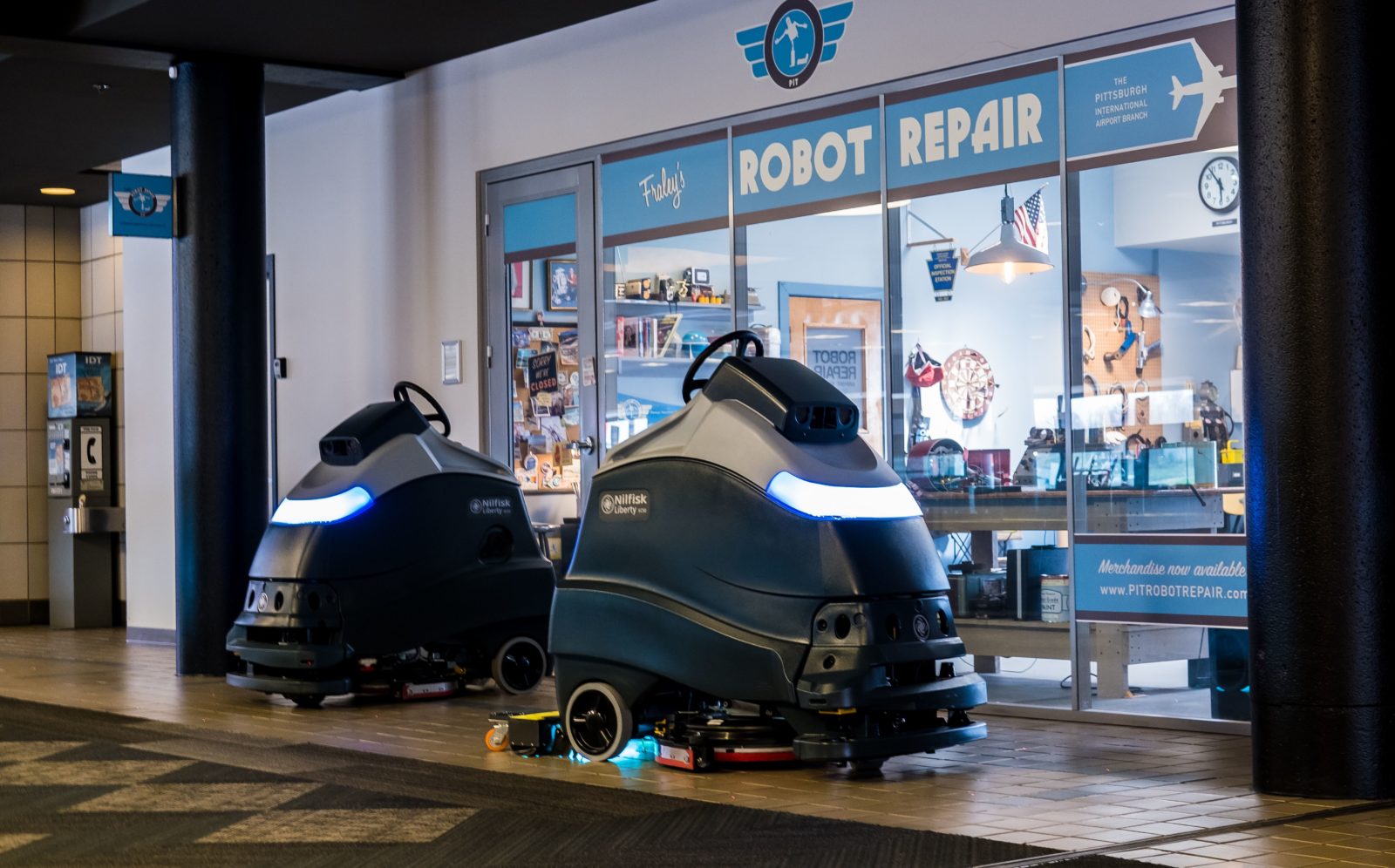
In July, JetBlue kicked off a 90-day pilot program at John F. Kennedy International Airport (JFK) and Fort Lauderdale-Hollywood International Airport (FLL) to evaluate Honeywell’s UV Cabin System.
These robots use ultraviolet light to clean an aircraft cabin in about 10 minutes.
Other airports and airlines have deployed robot-like tools as well.
And now San Antonio International Airport (SAT) enters the picture with its shiny new purchase: the Xenex LightStrike robot.
This robot is billed as “the only ultraviolet (UV) room disinfection technology proven to deactivate SARS-CoV-2 – the virus that causes COVID-19.”
SAT says the LightStrike uses environmentally-friendly pulsed xenon and can disinfect an area in less than 10-15 minutes without warm-up or cool-down time. They plan to use it pretty much everywhere in the airport, including jet bridges, gate areas, ticketing counters, baggage claim, concessions, elevators, and restrooms.
And it looks like the LightStrike robot is here to stay. SAT airport plans to have a contest to give the robot a name.

